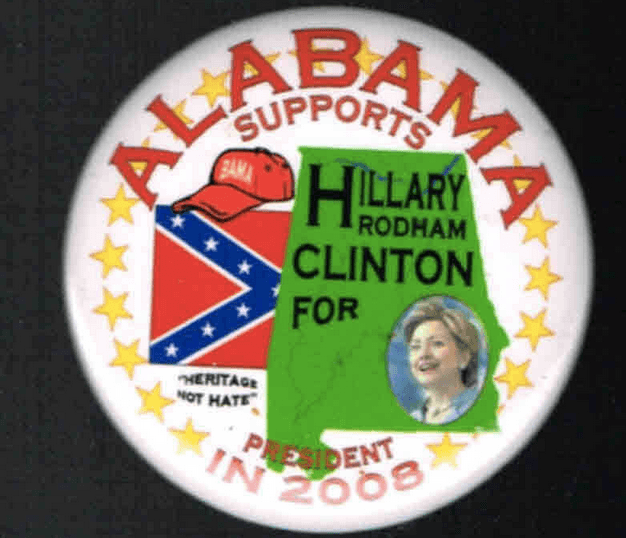tweakabelle
Posts: 7522
Joined: 10/16/2007
From: Sydney Australia
Status: offline

|
It appears that the flag has a history of controversy going back to its first use in Sth Carolina. Its meaning has long been contested:
" The "Stars and Bars" flag, currently the subject of controversy, was actually the battle flag of Gen. Robert E. Lee's Army of Northern Virginia.
After the war ended, the symbol became a source of Southern pride and heritage, as well as a remembrance of Confederate soldiers who died in battle. But as racism and segregation gripped the nation in the century following, it became a divisive and violent emblem of the Ku Klux Klan and white supremacist groups. It was also the symbol of the States' Rights Democratic Party, or "Dixiecrats," that formed in 1948 to oppose civil-rights platforms of the Democratic Party. Then-South Carolina Gov. Strom Thurmond was the splinter group's nominee for president that same year; he won 39 electoral votes.
Now, the flag is a frequent emblem of modern white supremacist groups. The alleged Charleston shooter, Dylann Storm Roof, was photographed holding the Confederate flag in images on his website. Not all southerners, who believe the flag should be flown, however, see it as a racist symbol. They see it, instead, as a symbol of southern pride or as a way to remember ancestors who fought in the Civil War.
The flag was first flown over the state Capitol dome by Democratic Gov. Fritz Hollings in 1962 to mark the centennial of the start of the Civil War, but many saw it as a reaction to the civil-rights movement and school desegregation. For nearly four decades, it continued to be a controversial issue in the Palmetto State. A 1994 nonbinding referendum placed on the GOP primary ballot found that three-in-four voters said the flag should keep flying. That same year, black ministers and the NAACP threatened a boycott of the state if the flag didn't come down, and business leaders sued to remove the flag.
But in 2000, a compromise was reached — the battle flag would be removed from atop the dome and a smaller, square version would be placed at a less-prominent place on the Statehouse grounds — on a 20-foot pole next to the 30-foot Confederate monument. But that didn't end the controversy, and many years of protests, criticism and boycotts followed."
http://www.npr.org/sections/itsallpolitics/2015/06/22/416548613/the-complicated-political-history-of-the-confederate-flag
Here is more evidence from Time Magazine to support the view that the meaning of the flag has long been controversial:
"South Carolina has not always flown the flag. The state’s first modern hoisting of the standard came in 1961, as part of official commemorations of the centennial anniversary of the beginning of the Civil War. As K. Michael Prince notes in his book about the relationship between the state and the flag, Rally ’round the Flag, Boys!, the celebrations kicked off in Charleston, where the fighting had begun 100 years earlier. The flag’s place at the Capitol was officially confirmed by the state legislature the following year.
Still many historians say the appearance of the flag likely had a more nefarious purpose: to symbolize Southern defiance in the face of a burgeoning Civil Rights Movement. The move was, TIME later noted, “a states’-rights rebuff to desegregation.”
“The Confederate flag symbolizes more than the civil war and the slavery era,” wrote James Forman Jr. a professor at Yale Law School, in a law journal article about the flag’s history at state capitols. “The flag has been adopted knowingly and consciously by government officials seeking to assert their commitment to black subordination.”
The decision in South Carolina didn’t attract much attention at the time. Civil-rights activists were more concerned with securing voting rights and ending legal segregation than a flag, and the state legislature relied on a concurrent resolution, which is typically reserved for uncontroversial measures, to order the flag placed atop the statehouse. Because concurrent resolutions don’t require much debate, there’s little record of what arguments were used in favor of flying the flag.
But there was also little question about the segregationist views of some South Carolina political leaders at the time. South Carolina Senator Strom Thurmond famously launched a 24-hour filibuster of the Civil Rights Act in 1957. And the state’s governor, Donald Stuart Russell, fought to keep African Americans out of state universities."
http://time.com/3930464/south-carolina-confederate-flag-1962/
Re-posted from the 'gun control' thread.
< Message edited by tweakabelle -- 6/23/2015 11:55:10 AM >
_____________________________
|


 Profile
Profile













 New Messages
New Messages No New Messages
No New Messages Hot Topic w/ New Messages
Hot Topic w/ New Messages Hot Topic w/o New Messages
Hot Topic w/o New Messages Locked w/ New Messages
Locked w/ New Messages Locked w/o New Messages
Locked w/o New Messages Post New Thread
Post New Thread